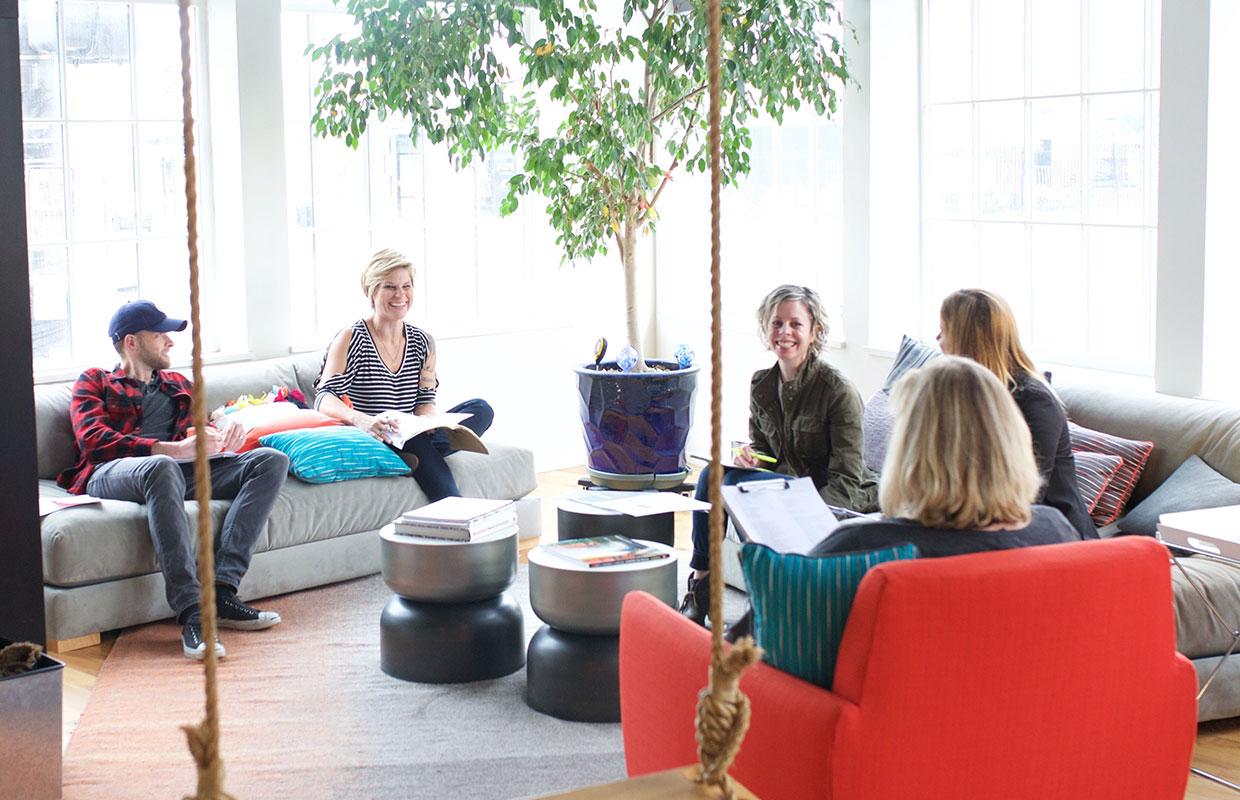
The tension between the need to be a practical business owner while running a creative business is real. Practicality and creativity aren’t mutually exclusive, and it seems that harnessing both is key to running a successful business.
How do you temper creative impulse with strategic decision making? Put your creative know-how to work and find unique solutions to your toughest problems.
Be patient
Being pragmatic requires patience. It requires a firm belief in playing the long game and keeping your focus on big goals.
When you want to jump at an opportunity, ask yourself: How will this decision impact the company in 10 years? How would I make this decision if I were making it for my family?
Make sure every opportunity ladders up to your overall strategy and stay away from instant gratification.
Think outside the recruiting box
We knew from treetree’s start that we wanted to offer excellent benefits. Not only did we need to attract amazing talent, but we also wanted to help the trees care for their families.
But practically speaking, in the first couple of years, we couldn’t do that just yet. We had to use our creativity to attract top talent without digging ourselves into a financial hole while we were still a growing startup.
One solution that we still stick to is the unique way we handle sick days. We simply don’t limit them. Instead, we instituted short-term disability in order to offer a unique benefit for the times that trees needed to use it, but also to protect the business for needs that extended longer than five consecutive days. We got creative without letting risk scare us out of offering a great perk to our employees.
Be realistic with investments
Sometimes being practical takes even more discernment during times of growth. You can’t always hire for how busy you are at the moment.
Ask yourself: Do we just need to get through this busy period with some creative solutions? Should we bring in a couple freelancers or reward the late-late-night team with comp time when the dust settles?
If you’re like me, you can’t afford to have kneejerk reactions. We’ve had to stay focused on our long-term goals and be creative in how we help the team get through without overloading payroll.
Or how about this: When cash flow looks great and your team is itching to be creative, it’s easy to start projects that don’t need to be started. For example, be realistic with office space enhancements and marketing materials. Especially as creatives, we sometimes get tired of our own collateral or even our own space that we see day in and day out.
We’ve had to resist the urge to redo something just for the sake of redoing it.
Learn to say no
treetree’s unique positioning as The Agency of Special Projects means we have to think outside the traditional industry model. Sometimes it means we decide to say no thank youto tempting opportunities—but practically, it means we can build a great business.
Another practical way to protect our culture is to be selective.
Ask yourself: We can do most things—but should we? Are we aligned with the same core values with potential clients? Wherever we spend our limited resources, are we going to be able to deliver the best possible product? What are the risks to taking on this project and do those risks get us closer to our end game?
It can be tempting to work with every possible new client when you’re still just trying to keep the lights on. Ultimately, you should be aiming to pick and choose opportunities that deliver the best product.
For treetree, being choosey lets us be all-in. Having a selection process means we honor the fact that we can’t do everything. Staying selective with our partners lets us go deep with each client in a way that stays true to our core values.
Learn when to push your creativity further
Operating practically can actually drive more creativity. What are things you, as a creative business, can do better and with more innovation than someone else because of your comfort level with the creative ideation process?
This process teaches us it’s okay to fail. It’s okay to have a million crumpled up ideas in the trash in an effort to find one gem. Owning a creative business helps us create many opportunities while our practical side helps us cherry-pick the best solution.
And at the end of the day, this process tells me that you can run a creative company and be a practical leader. In fact, it’s possible that embracing both is the secret sauce to running a successful business.
Becca Apfelstadt, Co-Founder and CEO of treetree, is on a mission to make sure her agency is the favorite place employees have ever worked and clients have ever hired. treetree is The Agency of Special Projects, located in Columbus, Ohio. Learn more at treetree.wpengine.com
